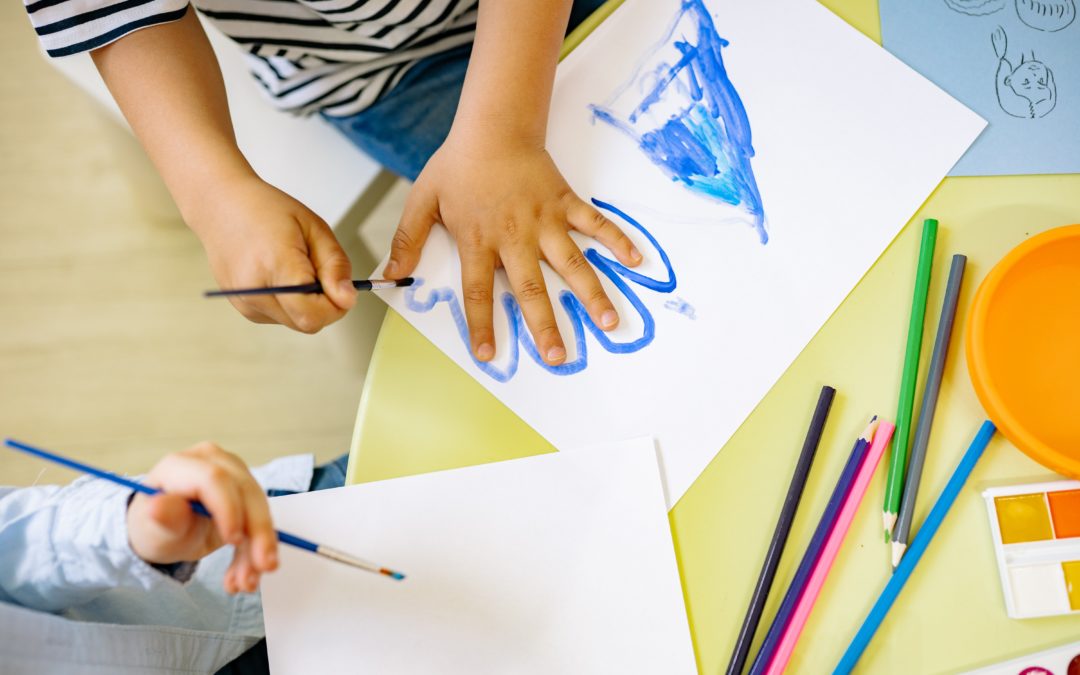Encouraging Drawing
By Emma Thomas
Encouraging Drawing – Drawing and mark making are such important forms of early literacy. While some children love drawing, others just aren’t interested! As parents there is lots we can do to help our children pick up a pencil and enjoy this process. Inspiring a love of drawing will help our children as they approach formal literacy at school, develop creativity and foster a love of the arts.
Stages of drawing
Looking at the work of young children we can clearly see that they progress through different stages of drawing, from scribbling through to drawings of objects. If you would like to read more about this you can https://www.zerotothree.org/resources/305-learning-to-write-and-draw
Encouraging Drawing at Home
Have a look at your home and think about what drawing supplies you have. Is there some where inviting for your children to sit and draw? Are they able to access the supplies they need?
Try different drawing materials
- Pencils are the most common drawing tool, however they can be hard for little fingers to grasp and you need to use the correct amount of pressure to mark the page.
- Crayons are a good option and come in a variety of shapes and sizes.
- Oil pastels are exciting and easy to draw with, they can make a mess though!
- Felt tip pens are popular with everyone! They are easy to use and make bright, bold lines. Try thin and thick pointed pens.
- Ball point pens – being allowed to use the ‘grown up pens’ can be a real thrill for little ones.
- Stamp pens are a great novelty.
- Paint sticks are an excellent option when your child wants to paint, but you don’t want the mess!
Draw on different materials
- Paper – try large paper, small paper and different colours!
- Cardboard – different sizes and colour of cardboard
- Cardboard box – let your child sit in a box and draw on it!
- Fabric – a different texture to try.
- Concrete, walls, fences – this encourages larger pictures
Drawing Ideas:
Office Blay – one of my daughters favourite types of drawing is to use a ballpoint pen and one of my notebooks, or a pack of sticky notes!
Night Sky – use metallic pens or paint markers on black paper to make some amazing pictures.
Invisible Drawing – draw using a white candle and then paint with water paint to make the picture appear.
Car Drawing – sticky tape pens to the backs of toy cars and let your children zoom them around to create roads and pictures.
Upside Down Drawing – stick paper under a table and let your children lie on their back to draw. This will inspire their creativity and is great for their gross motor development.
Chalk Drawing – draw on the fence, wall or concrete. Having a large space will inspire your child to think differently. Bonus – they can wash away the drawings and start again!
Make a Plan – if you have a child who loves building but isn’t interested in drawing you can challenge them to draw a plan of what they want to create before they start.
Vertical Drawing – put paper on an easel, stick to a wall or use chalk to draw on the fence. Drawing on a vertical surface is great for arm and shoulder development and improves shoulder stability.
Tracing – help your child to trace their body (great with chalk outside), trace around their hand or trace around different toys.
Make it Relevant – children who are reluctant drawers might be quite happy to draw you a shopping list, help draw activities on the calendar or draw a picture for someone’s birthday.
While there are some great apps for drawing or games on the computer I would recommend the use of paper and pencil in the early years. Little hands need the tactile feedback that comes from holding a physical object. They also need to learn how much pressure to apply to make a mark. There will be plenty of time for using devices as they get older.
I hope you’ve enjoyed these ideas and try some of them with your own children!


Recent Comments